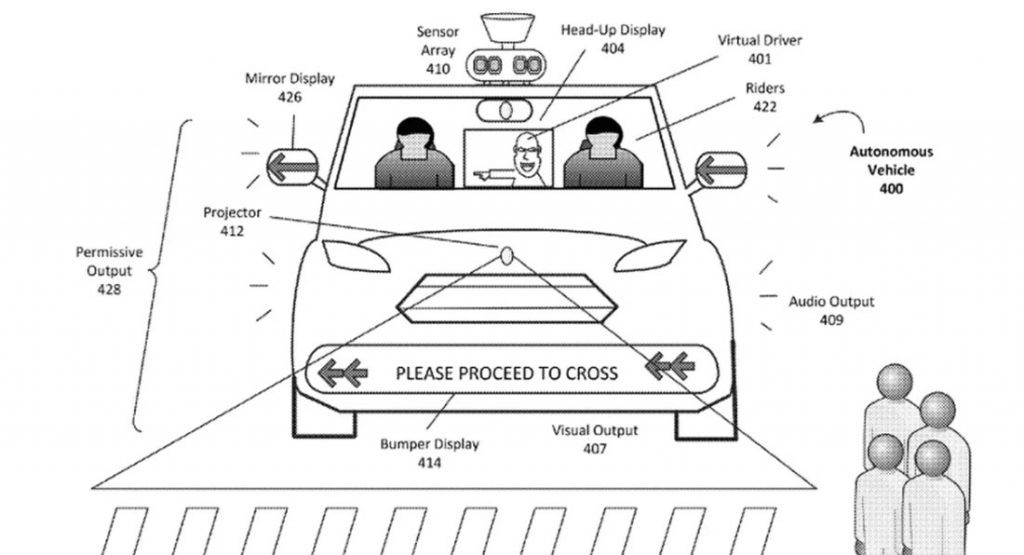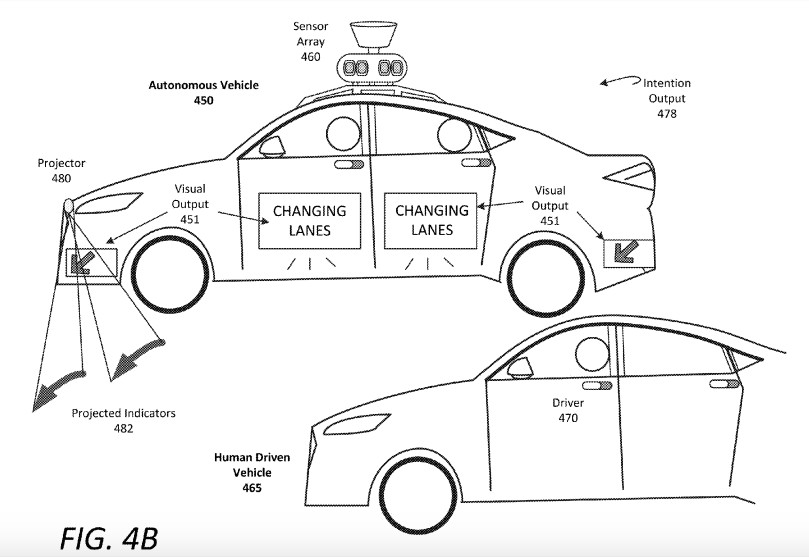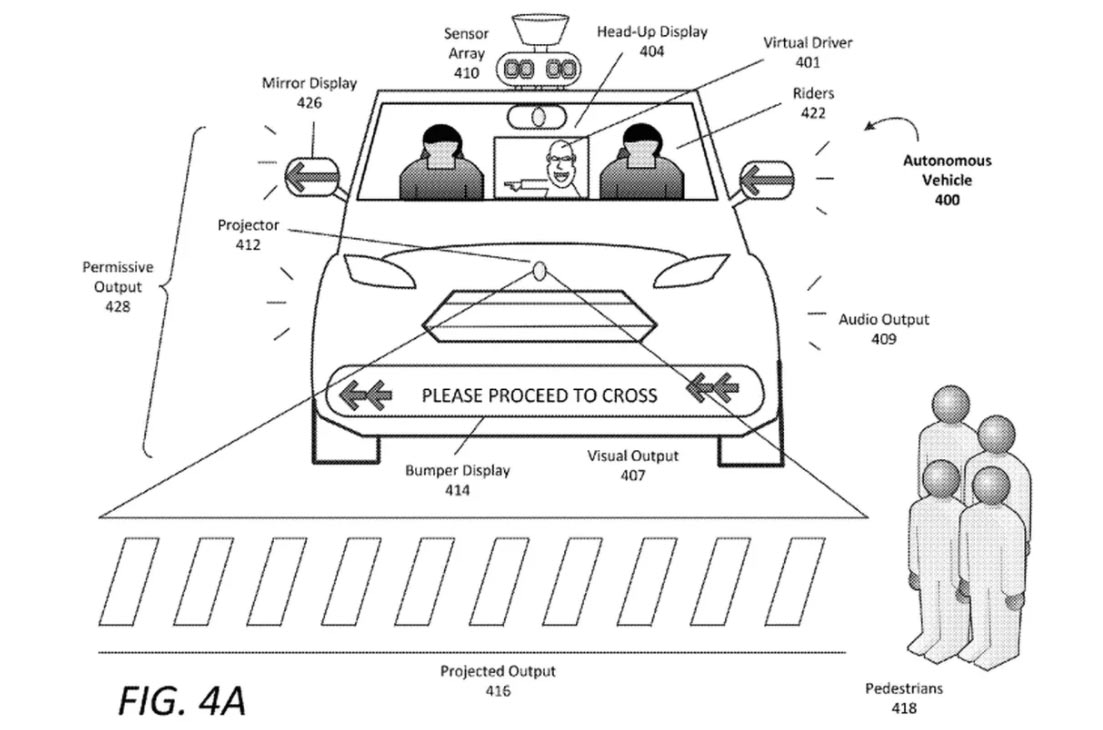Autonomous vehicles present a number of challenges to engineers far beyond the simple fact of them needing to safely drive around without a human on board. Before its headline-making accident in Arizona, which resulted in the death of a cyclist and its autonomous fleet being taken off the streets, as well as starting a huge debate concerning autonomous vehicles, Uber was exploring how its self-driving cars could communicate with pedestrians.
A recent patent application from Uber reveals how the ride-hailing service approached the problem.
The application depicts the vehicle with numerous flashing lights. For example, the front bumper can be seen with a large sign reading ‘Please proceed to cross’ while arrows on the wing mirrors also point pedestrians in the right direction. What’s more, an illuminated pedestrian crossing is projected onto the road and a ‘virtual driver’ pops up on the windscreen to give the whole thing a human touch.
“In the real world, when there’s a human driver, they’re usually not shouting out the window, ‘Hey I’m slowing down now,’” product designer at Uber’s Advanced Technology Group Sean Chin told The Verge.
“There are subtle things you can do, like a head nod or flashing lights. And while we don’t have final implementation, what we’re considering is what is a new language we can create to give people that information.”
Chin stressed that the systems depicted in the patents aren’t the final product and that the firm is also looking to provide instructions to pedestrians and other road users who can act accordingly.
“If we can instead say the car is slowing down, then all actors in the area, whether they’re pedestrians or cyclists pulling up along the side, can all interpret the vehicle state and make their own individual decisions,” he said.
Uber was also investigating using different noises for its autonomous vehicles to express their intent to road users.
Now, though, the company has to deal with the aftermath of that fatal accident – and everyone is waiting for the outcome of the lawsuit that will set a precedent, as no legislation is yet in place.





